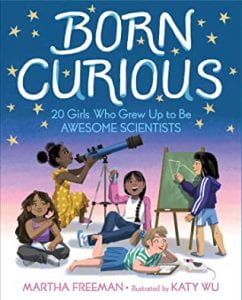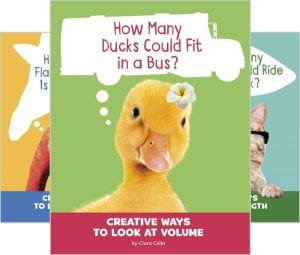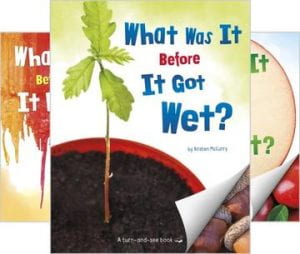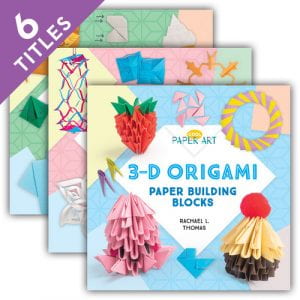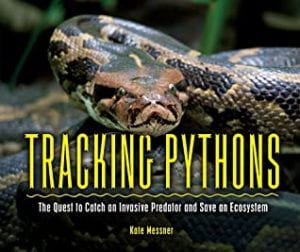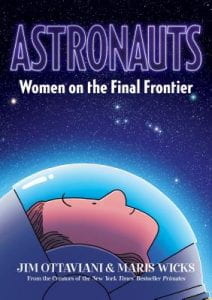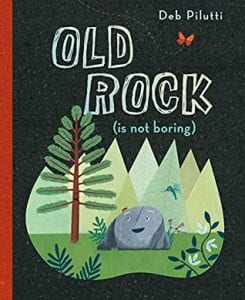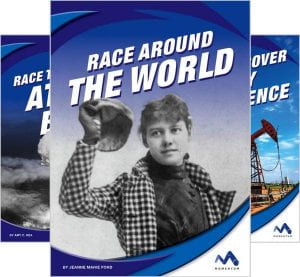 Great Races. Momentum, The Child’s World, 2020. $20.95 ea. $167.70 set of 8. 32 p. Grades 3-6.
Great Races. Momentum, The Child’s World, 2020. $20.95 ea. $167.70 set of 8. 32 p. Grades 3-6.
Ford, Jeanne Marie. Race Around the World. 978-1-503-83219-0.
Havemeyer, Janie. Race to Mount Everest. 978-1-503-83223-7.
Hutchinson, Patricia. Race to Space. 978-1-503-83220-6.
Maurer, Gretchen. Race to the Bottom of the Ocean. 978-1-503-83224-4.
Perdew, Laura. Race to Discover Energy Independence. 978-1-503-83222-0.
—. Race to Renewable Energy. 978-1-503-83226-8.
Rea, Amy C. Race to Develop the Atomic Bomb. 978-1-503-83225-1.
—. Race to the Poles. 978-1-503-83221-3.
Author Amy C. Rea taps into touchstones of world history in these concise overviews. Race to the Atomic Bomb provides the highlights of the creation of the atomic bomb, starting with brief background of founding scientists and ending with a mention of the post World War II proliferation of nuclear weapons. Aimed at a young audience, the thirty-two page book traces the development of the atom bomb from the British James Chadwick’s discovery of the neutron in 1935 to Albert Einstein’s prodding Franklin Delano Roosevelt to form the Manhattan Project to the dropping of atomic bombs on Hiroshima and Nagasaki. Black and white photographs of major scientists and scenes give context for young readers. The book concludes with probing critical thinking questions. Includes contents, glossary, resources, index.
THOUGHTS: Young readers who need some knowledge of these topics may benefit from this series. Though the facts are true, they just skim the surface. For example, Harry Truman’s decision to drop the atom bomb merits a few lines. Relaying the number of deaths and including Truman’s reflection on the dreadfulness of the atom bomb does not convey the impact of such devastation. This series seems directed at a younger audience who are just learning about these events.
355.8 History Bernadette Cooke, School District of Philadelphia

